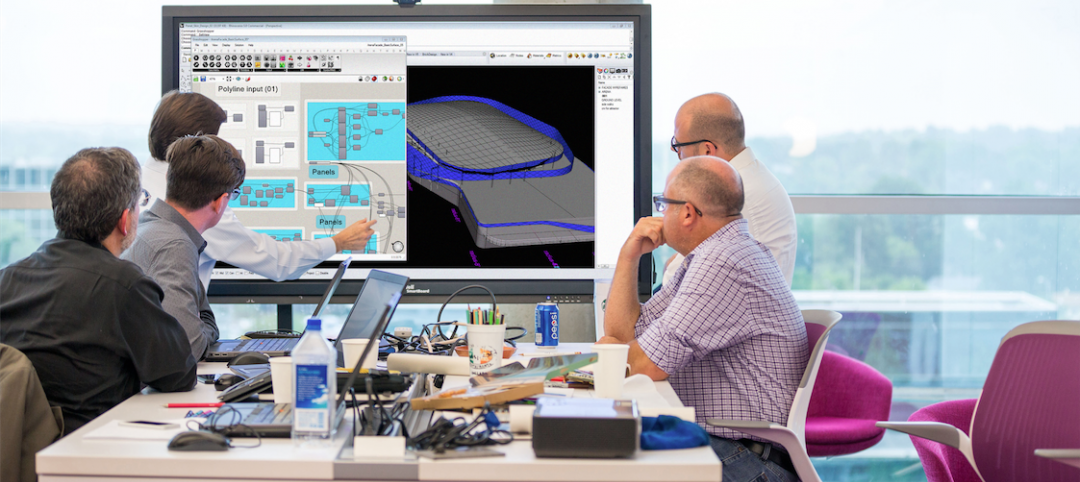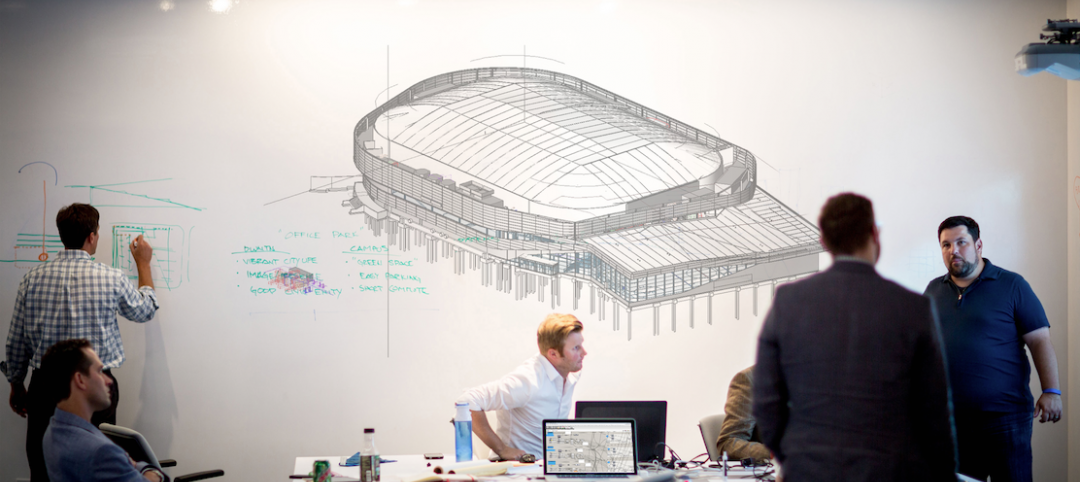The U.S. construction industry added 48,000 jobs in December, including 22,800 jobs in nonresidential construction, according to the Bureau of Labor Statistics (BLS) preliminary estimate released Jan. 9.
November's estimate was unchanged in this release, remaining at 20,000 net new construction jobs, but nonresidential construction's November jobs figure was upwardly revised to 7,100 jobs.
"The U.S. economy added an average of 289,000 jobs per month during the final three months of 2014, indicating that momentum is surging as we transition into 2015," said Associated Builders and Contractors Chief Economist Anirban Basu. "This represents good news for the construction industry in 2015 and perhaps beyond, particularly with respect to office construction, retail construction, and other segments that benefit directly from accelerating job growth and decreasing unemployment. Overall, the economy has built steady momentum since the end of last winter adding an average of 246,000 jobs per month in 2014, an increase of more than 50,000 jobs added per month compared to 2013."
According to the BLS household survey, the national unemployment rate fell to 5.6% in December. This represents the lowest level of unemployment since June 2008. The declining unemployment rate is most likely a result of a labor force that shrank by 273,000 persons in December, after expanding in the previous two months. The labor force participation rate fell by 0.02% and now sits at 62.7%.
"One of the most interesting aspects of the report is that construction unemployment ended the year at 8.3 percent on a non-seasonally adjusted basis," said Basu. "While construction firm executives have been worried for years about the specter of construction skills shortages, the BLS data indicate there are plenty of people looking for jobs in construction. It is likely that many of these prospective workers lack the skills necessary to fill the openings construction firms are seeking to fill or live in areas where construction employment growth is much slower.
"Normally, high construction unemployment would imply slow rates of wage and compensation increases; however, ABC believes this is not the case," added Basu. "Because of the presence of skills mismatches, wage gains are likely to be sizeable in 2015 even in the presence of lofty rates of construction unemployment."
Construction employment for the month and the past year breaks down as follows:
• Nonresidential building construction employment expanded by 10,000 for the month and is up by 23,400 jobs, or 3.4 percent, since December 2013.
• Residential building construction employment expanded by 800 jobs in December and is up by 44,500 jobs, or 7 percent, on an annual basis.
• Nonresidential specialty trade contractors added 12,800 jobs for the month and employment in that category is up by 76,900 jobs, or 3.7 percent, from the same time one year ago.
• Residential specialty trade contractors gained 12,700 jobs in December and have added 87,600 jobs, or 5.6 percent, since December 2013.
• The heavy and civil engineering construction segment gained 11,600 jobs in December and job totals are up by 57,900, or 6.6 percent, on a year-over-year basis.
To view the previous employment report, click here.
Related Stories
Architects | Jun 15, 2016
Design Thinking makes its way into Yale School of Management
The school will introduce Design Observer co-founders Jessica Helfand and Michael Bierut as faculty.
Retail Centers | Jun 14, 2016
Zaha Hadid and Gensler among finalists for Sunset Strip billboard design competition
The concepts are curvy, sleek, and multidimensional, and feature sharp digital displays.
Movers+Shapers | Jun 14, 2016
VERTICAL INTEGRATOR: How Brooklyn’s Alloy LLC evolved from an architecture firm into a full-fledged development company
Led by an ambitious President and a CEO with deep pockets, Alloy LLC's six entities control the entire development process: real estate development, design, construction, brokerage, property management, and community development.
Office Buildings | Jun 14, 2016
Let's not forget introverts when it comes to workplace design
Recent design trends favor extroverts who enjoy collaboration. HDR's Lynn Mignola says that designers need to accommodate introverts, people who recharge with solitude, as well.
Building Team | Jun 13, 2016
BD+C launches Women in Design+Construction Conference
Inaugural 2.5-day event will convene 125+ leading AEC women in Dana Point, Calif., November 9-11, for professional development, networking, and career training.
University Buildings | Jun 9, 2016
Designing for interdisciplinary communication in university buildings
Bringing people together remains the main objective when designing academic projects. SRG Design Principal Kent Duffy encourages interaction and discovery with a variety of approaches.
BIM and Information Technology | Jun 7, 2016
Conquer computational design: 5 tips for starting your journey
Data-driven design expert Nathan Miller offers helpful advice for getting your firm ready to use CD tools and concepts.
BIM and Information Technology | Jun 7, 2016
6 ways smart AEC firms are using computational design methods
Rapid prototyping, custom plug-ins, and data dashboards are among the common applications for computational design.
Building Team | Jun 2, 2016
Managing risk when building in challenging locations
AEC firms recognize the upsides of exploring new, emerging markets. Whitehorn Financial's Steve Whitehorn offers four principles that can help guide you to success.
Airports | Jun 1, 2016
LaGuardia Airport’s massive redevelopment begins construction
The development consortium has secured financing for the $4 billion project, and signed an operating lease through 2050.
















